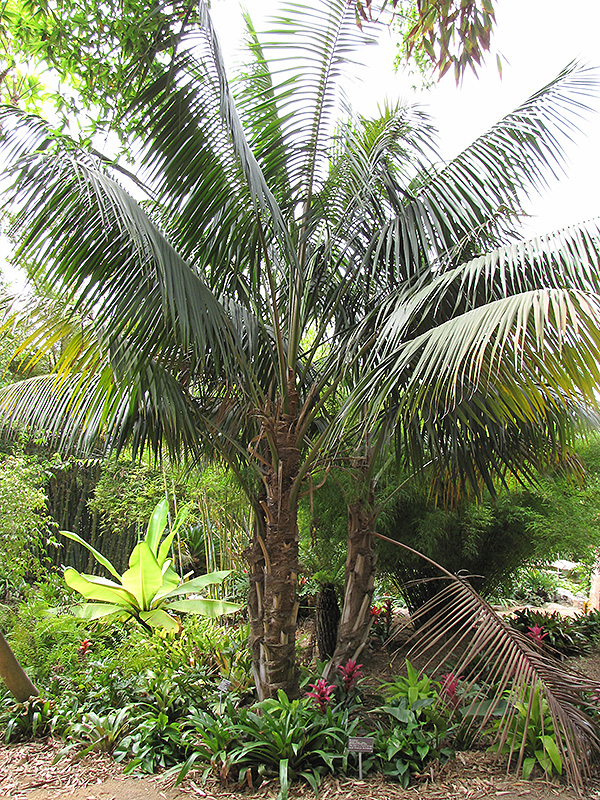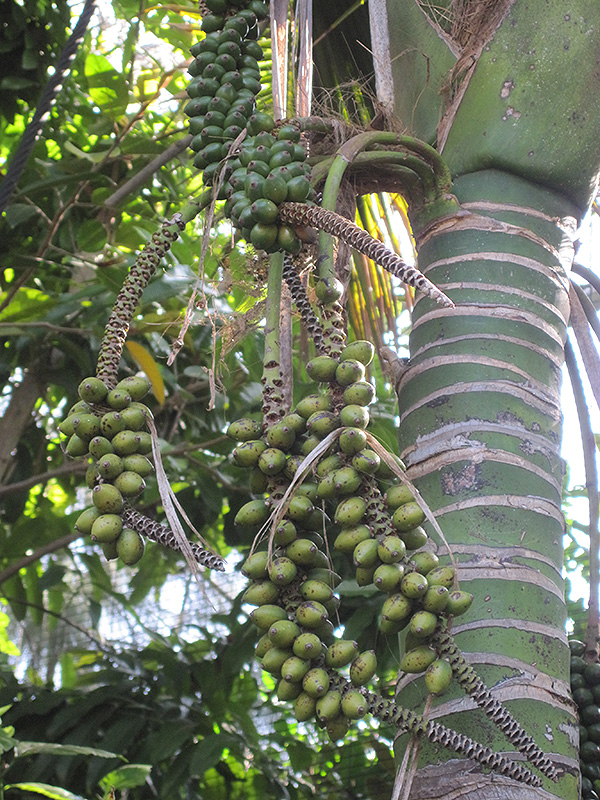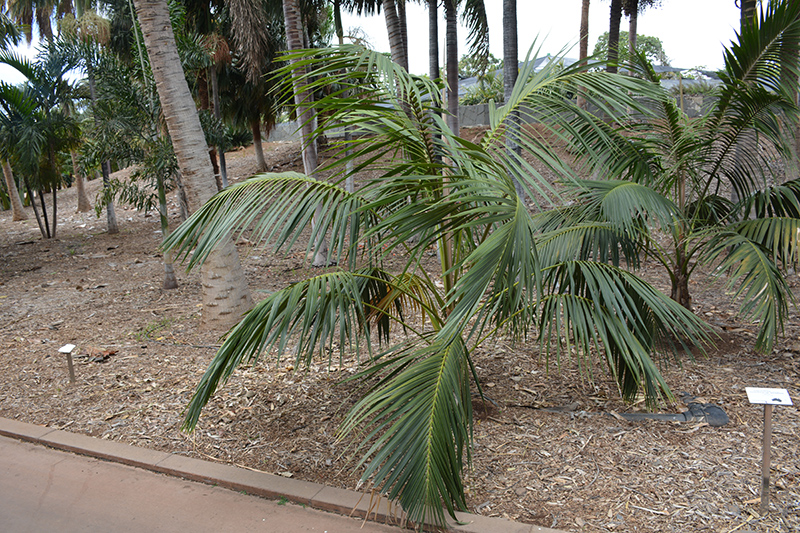Height: 30 feet Spread: 20 feet
Sunlight:
Hardiness Zone: 9a Other Names: Thatch Palm, Paradise Palm, Sentry Palm Description: An elegant palm that is relatively slow-growing with a slender trunk and graceful, arching, dark green fronds; a solitary trunk variety that can be grouped together for effect; very impressive as a landscape accent in warmer climates Ornamental Features Kentia Palm features unusual spikes of white flowers rising above the foliage from mid winter to early spring. It has attractive dark green evergreen foliage. The large narrow pinnately compound leaves are highly ornamental and remain dark green throughout the winter. The fruits are showy green drupes with orange overtones and which fade to brick red over time, which are carried in abundance from late summer to early winter. The smooth gray bark and dark green branches are extremely showy and add significant winter interest. Landscape Attributes Kentia Palm is an evergreen tree with a strong central leader and a towering form, with a high canopy of foliage concentrated at the top of the plant. Its average texture blends into the landscape, but can be balanced by one or two finer or coarser trees or shrubs for an effective composition. This tree will require occasional maintenance and upkeep, and may require the occasional pruning to look its best. Gardeners should be aware of the following characteristic(s) that may warrant special consideration; Kentia Palm is recommended for the following landscape applications; Planting & Growing Kentia Palm will grow to be about 30 feet tall at maturity, with a spread of 20 feet. It has a high canopy of foliage that sits well above the ground, and is suitable for planting under power lines. As it matures, the lower branches of this tree can be strategically removed to create a high enough canopy to support unobstructed human traffic underneath. It grows at a slow rate, and under ideal conditions can be expected to live for 40 years or more. This tree does best in full sun to partial shade. It is very adaptable to both dry and moist growing conditions, but will not tolerate any standing water. It is not particular as to soil pH, but grows best in rich soils, and is able to handle environmental salt. It is somewhat tolerant of urban pollution. This species is not originally from North America. Kentia Palm is a fine choice for the yard, but it is also a good selection for planting in outdoor pots and containers. Because of its height, it is often used as a 'thriller' in the 'spiller-thriller-filler' container combination; plant it near the center of the pot, surrounded by smaller plants and those that spill over the edges. It is even sizeable enough that it can be grown alone in a suitable container. Note that when grown in a container, it may not perform exactly as indicated on the tag - this is to be expected. Also note that when growing plants in outdoor containers and baskets, they may require more frequent waterings than they would in the yard or garden.![]()
![]()
![]()
![]()
![]()
![]()
![]()
![]()
![]()
![]()
![]()
![]()
![]()
![]()
top of page
Louie's Nursery Menifee - Plant Finder
Characteristics
Applications
Features & Attributes
This tool is an online resource representing many of the varieties that we carry over the course of the season, and is intended for informational purposes only. Inventory varies seasonally, so we cannot guarantee that every plant will be in stock at all times - please contact the store directly for current availability. It does not include our entire selection of plants, so be sure to visit our store to see varieties that may not be represented on this list.
bottom of page


